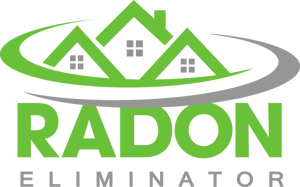Although it's a significant risk factor for lung cancer, many people do not know much about radon gas.
Most are unaware of the dangers of radon, but fortunately, radon awareness is starting to get better and more people are starting to test their homes.
Educating yourself and knowing what radon is and why it's dangerous is the best way to keep yourself safe from harmful gas.
Taking precautionary measures with radon testing and mitigation will help ensure the safety of yourself and your loved ones against the dangers of residential radon exposure.
In the article below, we will look at what radon is and why it's dangerous.
Are you concerned that you may already be exposed to high levels of radon? Read our recent blog article "What are Radon Levels?"
Table of Contents
- What Is Radon?
- Why Is Radon Dangerous?
- Testing Your Home For Radon
- Radon Mitigation
- Contact A Professional Radon Company
What Is Radon?
Radon can't be touched, seen, or smelled.
The only way to know if it's in your home is to test for it.
Testing is essential because unsafe radon levels are the second leading cause of lung cancer outside of cigarette smoking.
Radon is a naturally occurring radioactive gas found in soil, rock, and even water as uranium breaks down.
When uranium breaks down, it's released into the air and can get into your house and build up to unsafe levels, causing long-term health effects.
Exceptionally high radon concentrations may occur in homes built on natural soil with natural uranium deposits.
However, radon can be found in any house in any part of the country.
Estimations show that one in every fifteen homes in the United States has elevated levels of radon gas.
Radon enters your home through cracks in floors, walls, and even construction joints or gaps around service pipes, electrical wires, and pits.
When you breathe in these radioactive particles, it exposes your lung cells to small amounts of radiation.
Thankfully, outdoor radon levels are typically low and harmless.
However, persistent exposure can damage the cells of the lining of the lungs.
This prolonged exposure increases your risk of lung cancer.
Regrettably, you can't entirely prevent Radon poisoning since it's naturally present in the air.
But there are steps to take to lower your risk of exposure.

Why Is Radon Dangerous?
As we mentioned earlier, the effects of radon poisoning can be catastrophic.The only way to know for sure if exposed to high radon levels is to hire a radon mitigation professional to test your home.
Testing Your Home For Radon
You'll be pleased to know that testing your home for radon is simple and inexpensive.
You can buy radon test kits at hardware stores, home improvement stores, big box stores, and online, but most people prefer to work with radon professionals.
Radon tests will vary, but to test your home, you open the test and leave it sitting for a few days in the lowest level of your house and then send it off to a lab for testing.
Radon is measured in picocuries per liter of air (pCi/L).
Indoors, the average radon level in the United States is right around 1.3 pCi/L. Outdoors is about 0.4 pCi/L.
The action level for radon gas is at or above 4 pCi/L, but there is no safe level of radon besides 0.
If your home has radon gas levels exceeding this action level, you need to undergo mitigation efforts to reduce your exposure and lower your lung cancer risk.
While any level of radon can harm your health, the EPA says readings below 2 pCi/L only carry a small increased risk of lung cancer.
It's possible but challenging to reduce radon gas below these levels.

Radon Mitigation
Radon mitigation is easier than most people think.
Instead of just trying to seal your house to avoid dangerous radon levels, the most common mitigation method diverts the radon gas from under the basement floor through a pipe to the outside.
It exits your home through the roof like a chimney or through the wall like a vent.
Once the gas is outdoors, it dissipates and is no longer a hazard.
Radon mitigation systems costs will vary but average between $800 and $1,500.
If dangerous radon levels are found in your home, radon mitigation is a necessary expense to reduce your risk of cancer and other health risks.
If dangerous radon levels are found in your home, radon mitigation is a necessary expense to reduce your risk of cancer and other health risks.
Contact A Professional Radon Company
If you are worried about the dangers and risks of radon and long-term exposure, you need to contact a radon mitigation specialist today.
An experienced mitigation company will get your home tested for radon.
Radon Eliminator will reduce the amount of radon concentration in your home, and they are rapidly becoming one of the largest and most respected Radon Mitigation Service Providers in Ohio.
Radon Eliminator uses state-of-the-art radon testing and removal equipment to serve each one of its customer's unique challenges.
To make sure you aren't suffering from the dangers of radon, contact Radon Eliminator to test your home.
If a problem is found, they will fix it.
Click the button below to schedule a test and mitigation.





